What Hi-Fi? Verdict
The QN75QN900B is so much more than just a massive load of pixels – from its design to its picture quality, this is an AV experience that’s hard to beat
Pros
- +
Incredibly bright, dynamic pictures
- +
Exceptional detailing and sharpness
- +
Gorgeous premium design
Cons
- -
No Dolby Vision
- -
Frustrating new smart system
- -
No 8K content worth watching
Why you can trust What Hi-Fi?
The QN900B is Samsung’s flagship TV for 2022. A situation it justifies in all sorts of ways, but most notably with an 8K resolution, a premium metallic design that features speakers built into its edges, a high-end implementation of Samsung’s Mini LED backlighting technology, and specialist AI-supported picture processing.
It arrives, too, on the back of generations of excellent Samsung 8K TVs, and one impressive generation of Mini LED technology. So even if you’re not convinced by the appeal of its 8K resolution, it should have plenty more going for it.
Price
Samsung’s always been fairly aggressive with the pricing of its 8K TVs, and the QN75QN900B’s launch price of $8999, while high by average TV standards, was already lower than that of most non-Samsung 8K sets. Even better, the QN900B has already been heavily discounted and can now be picked up, at the time of writing, for around $5800.
Samsung’s top 4K model for 2022, the QN95B, currently costs $3300 in 75-inch form, while LG’s 77-inch 8K OLED, the OLED77Z2, is an extremely premium proposition at $13,000.
Design
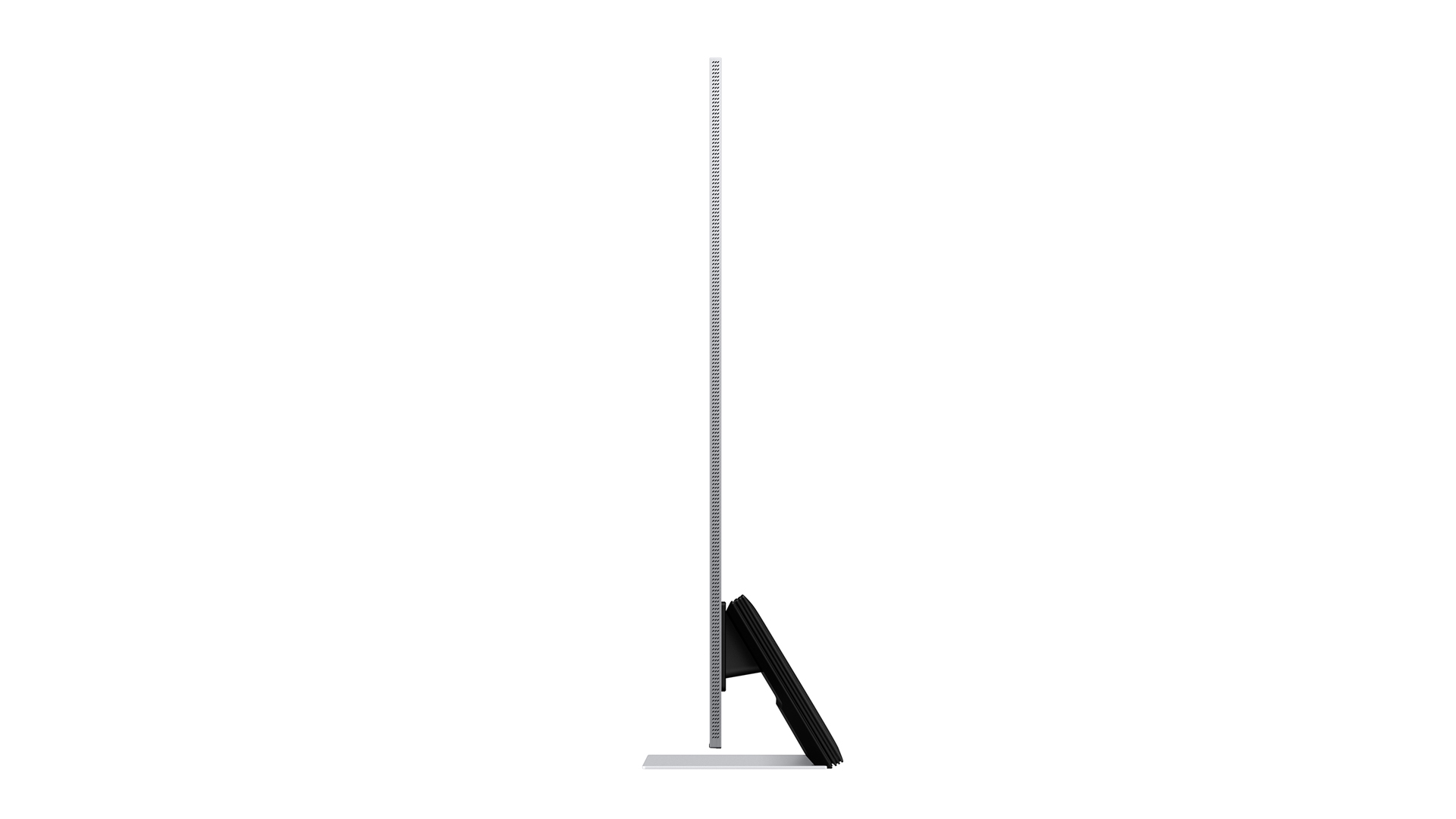
The QN75QN900B sets a suitably premium tone with its remarkable design. The first thing you notice is how little of it there is to notice. The frame around the screen is unfeasibly narrow, continuing the (almost) bezel-free look of the Infinity design Samsung has been using with its high-end TVs for a couple of years now.
This lack of bezel makes the TV feel impressively futuristic, and focuses attention on the pictures it’s producing rather than the mechanism that’s producing them.
The QN75QN900B is significantly slimmer round the back than its 2021 predecessor. Though there’s still enough depth, happily, to appreciate both the set’s gorgeous, gleaming metallic finish, and the way Samsung has built speakers behind the grilled surface of all four of the TV’s edges.
These edge-placed speakers are joined by a row of no less than eight lower mid-range drivers ranged right across the TV’s rear, raising hopes of a seriously potent version of Samsung’s Object Tracking Sound system. More on this later.
Despite being substantially slimmer than its predecessor, the QN75QN900B retains the same monolithic sculpting, whereby the rear panel is pretty much as sheer and flat as the screen on the front. This further bolsters the TV’s futuristic feel – as well as making it a potentially excellent wall-hanging option if you cough up for Samsung’s optional almost-flush wall mount.
The set actually ships, though, with a desktop stand. This is heavy duty and complicated to build (12 screws!), but it looks handsome when it’s on. Also, since it’s centrally mounted and pretty narrow for something holding up such a big screen, you can place the TV on a relatively narrow bit of furniture. So long as said furniture is stable and strong enough to take such a beast of a TV, of course.
The desktop stand also impresses by enabling you to slot the QN75QN900B’s One Connect box onto it. The One Connect, if you’re not familiar with it, is the external connections and processing box Samsung tends to ship with its premium TVs. The idea being that these boxes only need a single cable to deliver both power and AV information to the screen, massively reducing the potential for cable spaghetti to ruin the 75QN900B’s ultra-clean lines.
Connections carried on the One Connect box are plentiful. In particular, there are four HDMIs, all built to the latest HDMI 2.1 specification complete with support for the latest gaming features of 4K/120Hz, VRR and ALLM. But you also get three USBs and the inevitable ‘invisible’ connections of wi-fi and Bluetooth.
Samsung’s Ambient Mode, meanwhile, which fills the screen with digital artworks, ‘screensaver’ videos or your own photographs when you’re not watching the TV, turns out to work particularly well with the QN75QN900B’s sleek design.
Even the QN75QN900B’s ‘smart’ remote control is a cut above the norm – not least because it carries a solar panel on its rear side, making changing batteries a thing of the past.
The only design niggle is that the TV’s much thinner rear leaves the screen feeling a bit bendy during set-up. While this makes installation a bit scary, though, no harm is ultimately done.
Features
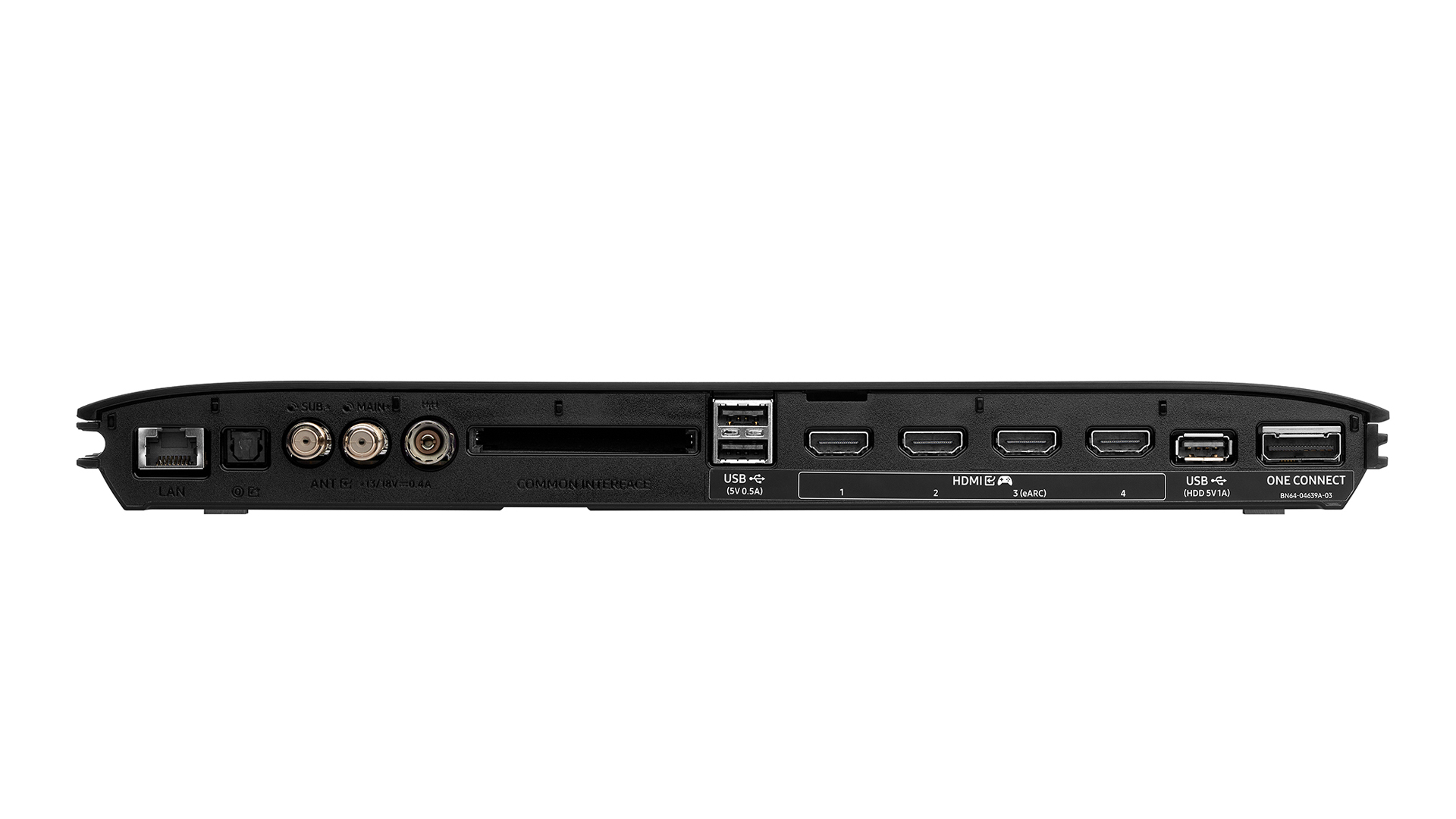
There’s a lot to get through here, so buckle up. Most importantly and obviously, the QN75QN900B has an 8K, 7680 x 4320 pixel count. This is arguably more controversial now than it would have been a couple of years ago, thanks to the public’s apparent ongoing apathy where 8K is concerned. An apathy not helped by the way many promises of native 8K content over the years have consistently failed to come to fruition. There are still reasons to consider buying 8K, though, especially on a screen as big as this one.
Especially when, as is the case with not just the QN75QN900B but also many other 8K TVs we’ve seen to date, the 8K resolution tends to be partnered with other premium picture features not found on flagship 4K sets.
The most important of these ‘support’ features on the QN75QN900B is its Mini LED lighting. This sees the screen being illuminated by LEDs 40 times smaller than those found in regular LED TVs. This means far more LEDs can be fitted into the same screen area, enabling potentially more brightness and more control over how light is used to create pictures.
On paper, at least, the QN75QN900B delivers on these two advantages of Mini LED lighting in spectacular fashion. Samsung has suggested that the 75QN900B is not just the brightest TV it has ever made, but potentially the brightest TV ever released, period. And it uses a massive 1920 local dimming zones to control how and where all that brightness goes in any given image.
To put this number of dimming zones in context, Samsung's outstanding 65QN95B 4K TV has ‘only’ 720 dimming zones. That is itself a high number by LED TV standards, and its impact on the QN95B’s picture quality is profound. So the prospect of what so many more zones might be able to achieve on the QN75QN900B is mouthwatering.

Screen size 75 inches (also available in 65in, 85in)
Type QLED
Backlight Mini LED
Resolution 8K
HDR formats supported HDR10, HLG, HDR10+
Operating system Tizen
HDMI inputs 4 (4 x 40Gbps HDMI 2.1)
Gaming features 4K/120, VRR, ALLM
ARC/eARC eARC
Optical output Yes
Dimensions (hwd, without stand) 37.2" x 65.1" x 0.7"
Especially since this monster dimming zone count is partnered with Samsung’s big new Mini LED feature for 2022: Shape Adaptive Light Control. This can refine how light presents within each dimming zone – for instance, pushing brightness harder in the middle of a dimming zone but reducing the light intensity at the zone’s edges for content that finds a bright object at the heart of a dark surrounding area. This new backlight feature has a transformational impact on the QN95B’s pictures, so there’s no reason to suppose it won’t work wonders with the QN75QN900B too. Especially with so many more dimming zones to work with.
The QN75QN900B is one of Samsung’s QLED models, meaning it uses Quantum Dots to generate its colors. Metal-clad Quantum Dots, in fact. These join the Mini LED lighting system in enabling the QN75QN900B to run as brightly as it does while also, hopefully, ensuring that the TV has enough color range to ‘keep up with’ the extreme brightness, so that very bright colors don’t start to look washed out.
Picture processing is provided by the latest version of Samsung’s Neo Quantum Processor 8K. As well as powering the local dimming and new Shape Adaptive Light Control feature, this processor improves on its 2021 version by increasing the number of ‘AI’ neural networks it can draw on when analysing/responding to incoming pictures, and stepping up to a 14-bit video processing system versus the previous 12-bit system.
This should all add up to benefits such as improved shadow and color detailing, better upscaling of sub-8K content (which is, of course, pretty much all content!), better control of lighting in very dark areas, and a more three-dimensional look to pictures.
As noted in the design section, the 75QN900B provides no less than four HDMI ports capable of supporting the full gamut of new gaming features (4K/120Hz, VRR and ALLM). It backs up these gaming chops with a Game Bar that provides quick access to key gaming features and signal information, and an excellently low input lag figure in Game mode of just 10ms. This figure is particularly impressive given that we’re talking about an 8K TV that always needs to add millions of extra pixels to any gaming source images it receives (until 8K gaming becomes a thing).
You can, handily, choose to sacrifice a little input lag on the QN75QN900B in response for more picture controls and processing if you’re playing a game that isn’t so dependent on ultra-fast responses.
Another great new feature Samsung has introduced to its premium 2022 TVs is Smart Calibration. This lets you calibrate your TV using nothing more than a free app on your phone and your phone’s camera. Multiple levels of calibration are available, with each taking a different amount of time to deliver different levels of accuracy. Levels of accuracy which will have the professional calibration industry nervously mopping its brow.
It’s not just the QN75QN900B’s picture offering that’s been improved for 2022. Samsung has also equipped its latest flagship TVs with a new ‘Pro’ version of its Object Tracking Sound (OTS) system. In the QN75QN900B’s case, this feeds an impressive 90W of power into a 6.2.4-channel array, the speakers for which are ranged around all four of the TV’s edges.
As its name suggests, the main focus of the OTS system is to try and place sounds accurately. So, for instance, if a car is shown crossing the screen it will be accompanied by the sound of the car crossing the screen too.
Samsung has finally taken the logical step of combining its OTS speaker design with built-in decoding of Dolby Atmos soundtracks. Plus a Q Symphony feature lets the QN75QN900B’s speakers join forces with those of many of Samsung’s recent soundbars.
There are a couple of chinks in the QN75QN900B’s mostly formidable feature armour. First, Samsung continues not to support the Dolby Vision HDR format on its TVs, sticking with HDR10, HLG and its own HDR10+ format. Second, Samsung’s attempt to revamp its trusty, Tizen-based Eden smart platform for 2022 hasn’t gone well.
The smart features retain the impressively comprehensive app support we’ve come to expect, and there’s ongoing strong voice command support. However, the new full-screen interface feels confusing, doesn’t promote content most people would want to watch, and isn’t customisable enough.
Picture
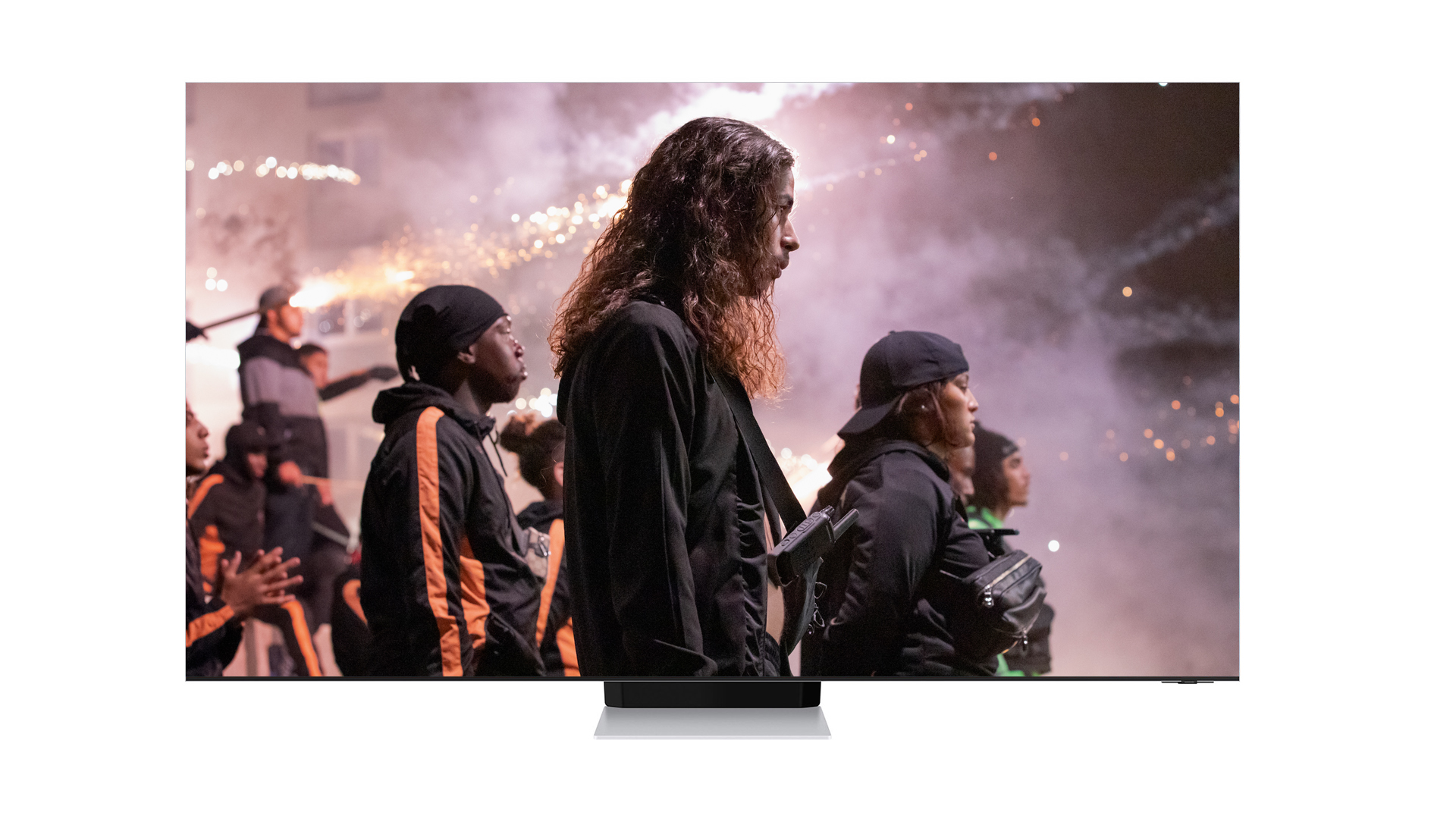
With 8K in itself not seemingly enough to tempt many TV buyers to step up from much cheaper 4K TVs, the QN75QN900B needs to offer more than just more pixels. Fortunately, that’s exactly what it does. In fact, it breaks new ground in multiple spectacular ways.
The first thing that hits you – almost literally, it feels like – is its brightness. In the set’s Dynamic preset the amount of light the screen can pump out truly is fearsome, even seeming to push beyond the efforts of the previous brightness champion, Sony’s ultra-expensive 8K Z9G.
This brightness is particularly extreme in bright highlights of HDR images, but full-screen brightness levels, too, are remarkably high. This expresses the upper end of HDR’s expanded light range with unprecedented intensity and dynamism, achieving more impact than we’ve seen on any TV before.
So bright are the QN75QN900B’s pictures, in fact, that they don’t just recreate the intensity of real daylight in the images you’re watching, but can actually make a dark room feel like you’re sat outside on a sunny afternoon!
It’s noticeable that the Dynamic mode can’t hold on to its brightest light peaks for very long at all before having to dim down a bit. But in regular viewing conditions image content usually changes rapidly enough for this dimming not to become noticeable.
More problematic is the fact that the Dynamic picture preset looks too aggressive to feel very natural for much of the time, and can become pretty fatiguing to watch. Colors look excessive, in particular, and the brightness can bring out noise in dark areas.
The Standard preset delivers a marked drop in the intensity of peak brightness areas, but rewards this sacrifice with a much more all-round balanced and immersive picture. Especially as it can sustain its brightness levels for a more consistent experience, leaves colors looking natural and full of detail, and still holds up extremely well versus the rest of the TV world with full-screen brightness.
The QN75QN900B’s intense brightness plays spectacularly into its color performance, too. The set’s color volume is massive, as even the brightest hues maintain levels of richness and vibrancy we’ve seldom if ever seen before. Just as importantly, though, provided you avoid the Dynamic preset there’s immense subtlety in the color performance too, helping the vibrancy look natural while also contributing to an outstanding sense of three-dimensionality to many images.
The extra color refinement seems to have displaced old color noise and color striping issues Samsung TVs have occasionally displayed in the past, too.
One interesting side note to the QN75QN900B’s extreme brightness is that even the Filmmaker Mode – a preset essentially calibrated by the third party Ultra HD Alliance to try and reflect the sort of look and image values found in mastering studios – looks exuberantly bright.
Looking beyond the QN75QN900B’s brightness, it also sets new standards when it comes to LCD black levels. The premium Mini LED arrangement produces black colors so deep and convincing that it’s hard at times to believe you’re not watching an OLED TV. An achievement made all the more remarkable, of course, by the fact that these black levels are appearing right alongside the extreme brightness we’ve already described.
And when we say ‘right alongside’, to a large extent we mean it. As in, you can have punchy image highlights such as street lights standing out against a dark background without black levels losing their integrity or the bright object being surrounded by so much as a hint of backlight clouding or haloing.
Samsung does still dim the intensity of bright objects down a bit, at least in its most aggressive Standard and Dynamic presets, in areas of really extreme contrast. The degree of light control offered by the QN75QN900B, though, means that these moments of dimming are rarer than they are on the QN95B, and also aren’t nearly as drastic in their extent as they were with Samsung’s 2021 Mini LED TVs. So you feel the contrast impact of QN75QN900B’s twin brightness and black level assault much more strongly.
All this and we haven’t yet mentioned the QN75QN900B’s 8K resolution. As noted with previous Samsung 8K TVs, including in 8K vs 4K head to heads, adding all those extra pixels actually does make a difference. It might not be huge, and depends on the quality of the content the TV is being fed, but the QN75QN900B’s pictures can look more immediate and life-like than 4K images would on the same size of screen.
This isn’t to say you always necessarily feel like you’re actually seeing specifically more detail in the picture (though some of our native 8K demo reel actually does look noticeably more textured), but images can look more lifelike and more full of depth. More like looking out of the window than staring at a screen.
What’s more, while the difference may be small, and again more of an overall feeling than a specific impression of masses of extra sharpness or detail, the QN75QN900B’s 8K resolution can enhance the look of 4K sources, giving them a denser and more three-dimensional feel. This is especially true of particularly pristine, high quality 4K sources, but Samsung’s AI processing has improved again when it comes to being able to distinguish between noise in a source and actual picture information when going about its 8K upscaling business.
This is, of course, a big deal given the lack of native 8K content out there in the world. We should stress again that the apparent advantages of upscaling 4K to 8K are fairly small, but they are there. And that matters for AV enthusiasts who want the most cutting edge experiences. Especially when this small 8K benefit is added to the much more substantial benefits the QN75QN900B delivers in other picture quality areas.
This seems as good a place as any, too, to point out that the QN75QN900B is mostly a jaw-droppingly great display for gaming. The sharpness, vibrancy, clarity, fluidity (with 120Hz games) and dynamic range of images make our resident Xbox Series X and PS5 look consistently more exciting than they've ever looked before.
Our only complaint is that the backlight controls take a noticeable hit, causing a little more blooming around bright objects than we see with the QN65QN95B when the gaming settings are set to deliver the fastest response time.
Where 8K struggles more to make sense is with HD, and especially SD, content. With HD the processing can typically keep things together pretty well, particularly, again, thanks to the AI processing’s even cleverer approach to dealing with noise. But it would be a stretch for most of the time to say 8K really makes HD look substantially better – and it can occasionally make it look worse. As for SD, the sheer amount of extra pixels the QN75QN900B needs to add to proceedings can feel like a step too far even for the combined brainpower of Samsung’s multiple neural networks. You can these days, though, limit your consumption of SD sources to almost zero with a bit of effort.
Trying to dig up other significant picture issues with the QN75QN900B isn’t easy, but there are one or two things worth mentioning. One is that the TV’s default motion Picture Clarity settings generate too many unwanted motion processing effects, and apply softness-inducing noise reduction where it doesn’t seem necessary. A Custom motion setting with blur and judder reduction both set below 50% and NR turned off definitely yields cleaner, more natural results, but motion handling is one area where we’d like to see Samsung’s AI processing get cleverer.
Another issue is some noticeable crushing out of shadow detail when using the otherwise very watchable Standard picture preset. Switching to the Movie or Filmmaker Modes fixes this, but at the expense of quite a bit of the dynamism that makes the QN75QN900B so special – and which we suspect most consumers will mostly want to watch. You can improve the black crush problem via some of the QN75QN900B’s picture settings (especially the Contrast Enhancer), but it’s a pity the presets don’t handle this better out of the box.
The Contrast Enhancer feature can also cause a little brightness instability where images fast cut between bright and dark content, and finally, while backlight blooming is all but non-existent when viewing the QN75QN900B straight on, it can become much more noticeable when viewing from an angle.
Sound
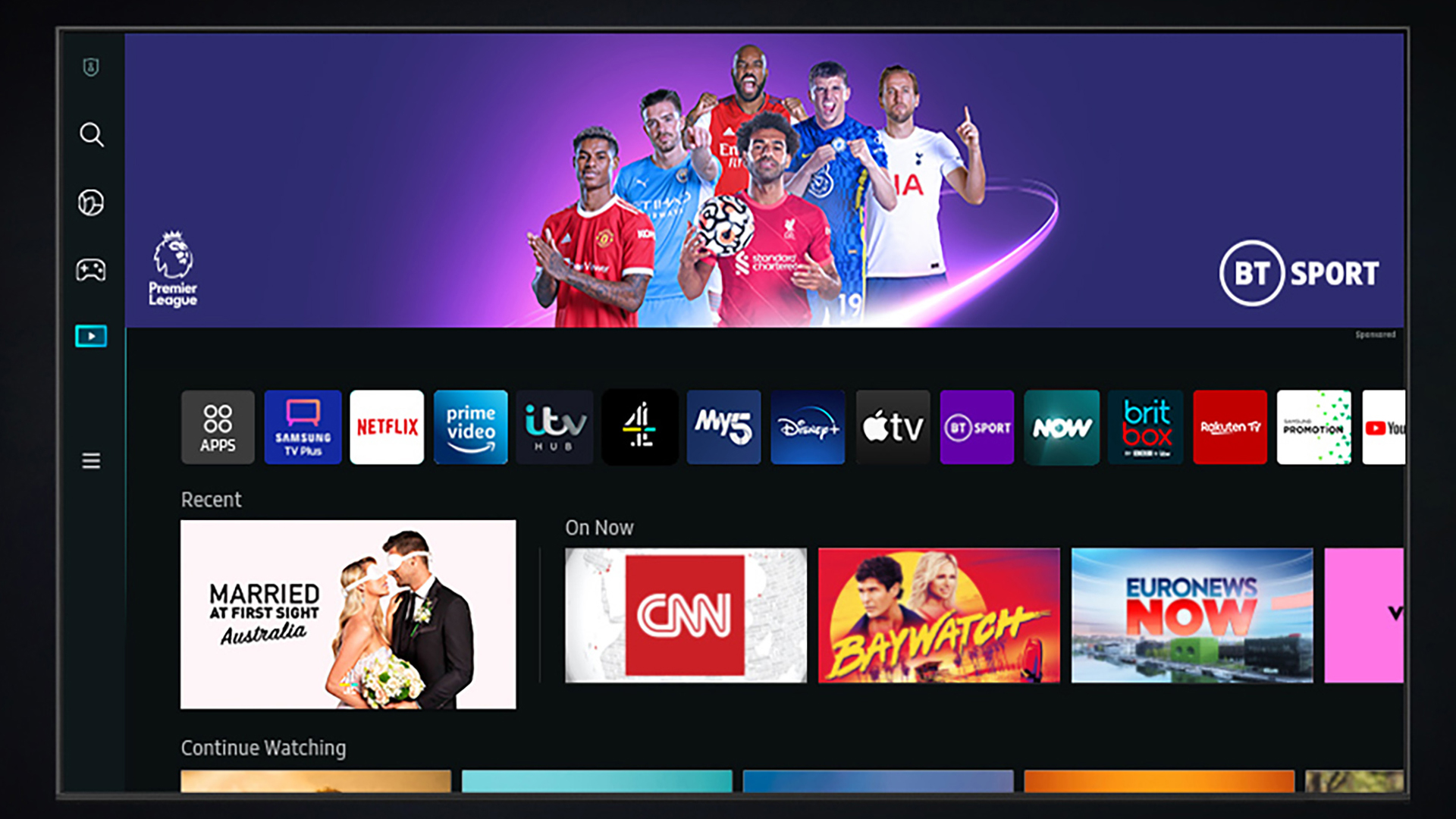
The 8K flagship QN75QN900B is in most ways a clear sonic upgrade over the 65QN95B. Having the speakers built into the screen’s edges helps it to both propel the sound further away from the screen and place details more accurately both on and off the screen.
Vocals, in particular, are placed with almost uncanny accuracy. The latest OTS Pro system actually includes a feature that detects faces in the picture to help place vocal sounds more precisely, and this really does seem to make a difference. Even if actors are only a few inches apart on the screen, you can still clearly hear their voices coming from slightly different places in the sound stage, exactly where they should be.
Details in a good movie mix are presented more clearly than they are with the QN95B, too. As if they have more breathing room in the mix.
The 75QN900B has the volume and dynamism to hit suitably hard for such movie staples as jump scares, gunfire and explosions, and it’s a relief to find its sound not backing off, as Samsung TV sound sometimes has in the past, under pressure from really dense movie mix moments.
Bass is reasonably well handled, too, attaching to the mid-range cleanly and convincingly, and although it only plumbs fair to middling depths, it successfully makes its presence felt.
Unfortunately, very bass-heavy sections of soundtracks can provoke a bit of buzzing from the speakers when the volume is set quite high, and while the 75QN900B sounds better than the QN95B, its sound does still seem to only exist behind or, at best, to the sides of the TV. It doesn’t push forward into your room in the way that the best TV audio systems do, robbing its sound of some impact and immersive immediacy. In fact, you can actually feel a bit detached from the sound at times, despite the impressive detail placement of the OTS processing.
Calling in an Amplify sound option helps, by simply opening up the dynamic range and scale of the soundstage. But this can also introduce some harshness into treble that isn’t there with Amplify turned off.
Verdict
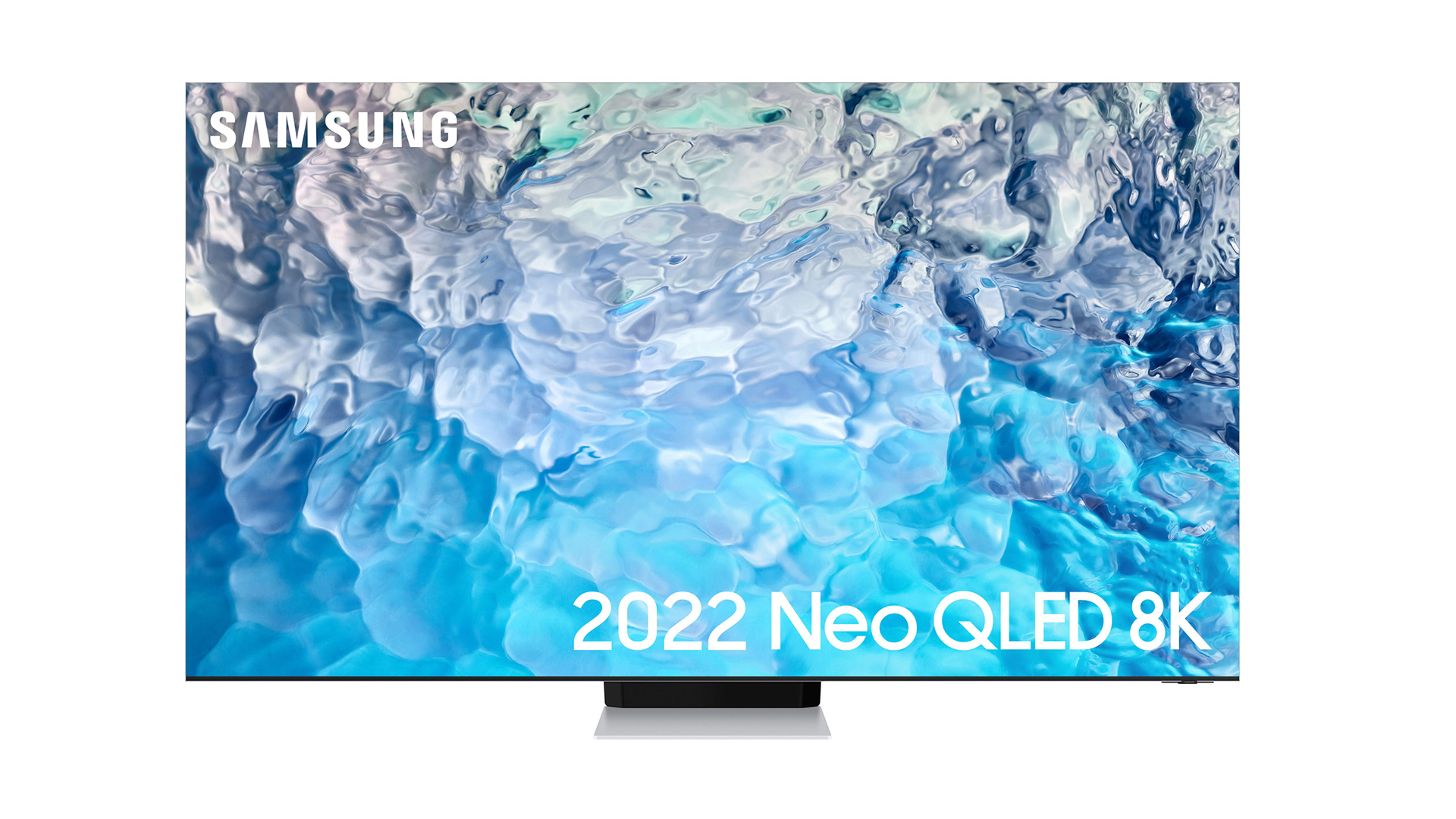
Samsung has thrown a confusing spanner in the works once again by making its latest 8K high-end TV even better, by a margin, than its excellent 4K flagship for 2022. In fact, the QN75QN900B is a truly spectacular viewing experience that continues what feels like an annual Samsung theme of redefining what we consider LCD TVs to be capable of.
In other words, by adding far more improvements to the QN75QN900B than simply four times as many pixels, it’s continued to make a case for buying an 8K TV. Even if the main reasons for buying that 8K TV aren’t actually its 8Kness.
SCORES
- Picture 5
- Sound 4
- Features 5
MORE:
Read our review of the Samsung QN65QN95B
Also consider the LG OLED65G2
Read our Samsung QN75QN900A review
John Archer has written about TVs, projectors and other AV gear for, terrifyingly, nearly 30 years. Having started out with a brief but fun stint at Amiga Action magazine and then another brief, rather less fun stint working for Hansard in the Houses Of Parliament, he finally got into writing about AV kit properly at What Video and Home Cinema Choice magazines, eventually becoming Deputy Editor at the latter, before going freelance. As a freelancer John has covered AV technology for just about every tech magazine and website going, including Forbes, T3, TechRadar and Trusted Reviews. When not testing AV gear, John can usually be found gaming far more than is healthy for a middle-aged man, or at the gym trying and failing to make up for the amount of time he spends staring at screens.
-
Freddy Reply
Great review! I like these 8K flagship Samsung TVs too. (y)What Hi-Fi? said:Samsung throws everything at its 2022 flagship TV, ensuring that its 8K resolution is just the start of its charms.
Samsung QE75QN900B : Read more
